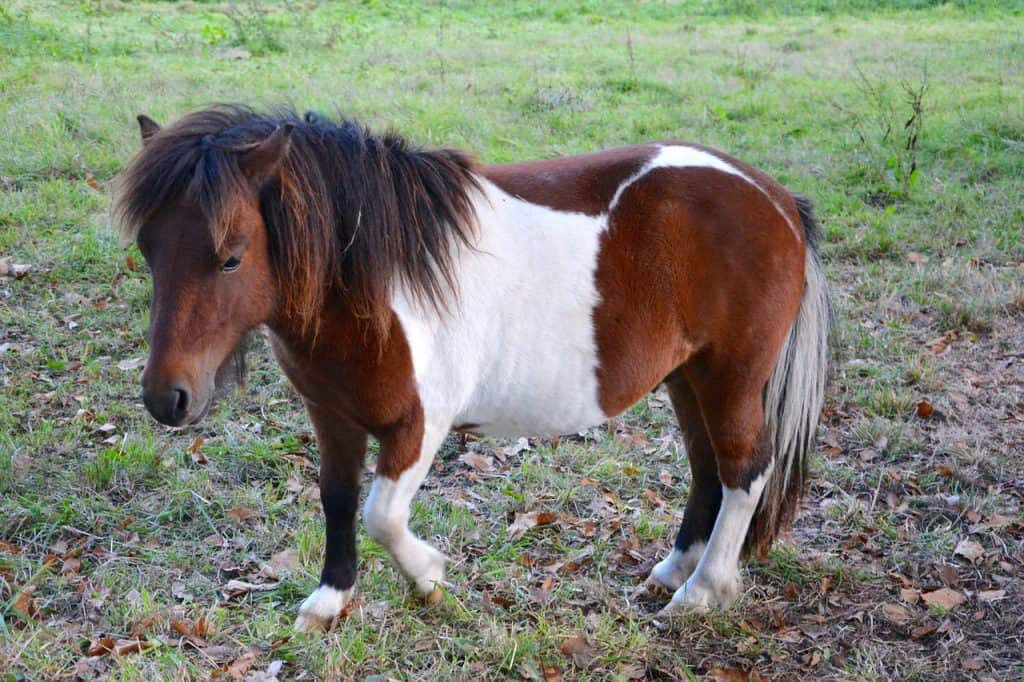
Introduction
Although the Shetland Pony was developed 100 miles (160km), northeast of Scotland in the Shetland Islands, it took them four thousand years to develop, and their Breed Association wasn’t formed until 1890. They are one the most powerful breeds, with a body that can pull twice as much and pack half as much.
They are popular in Europe as children’s horses, ponies to drive, companions, and sometimes as service ponies. The American Shetland and the German Classic Pony are similar in North America and Germany.
Quick facts about Shetland Ponies
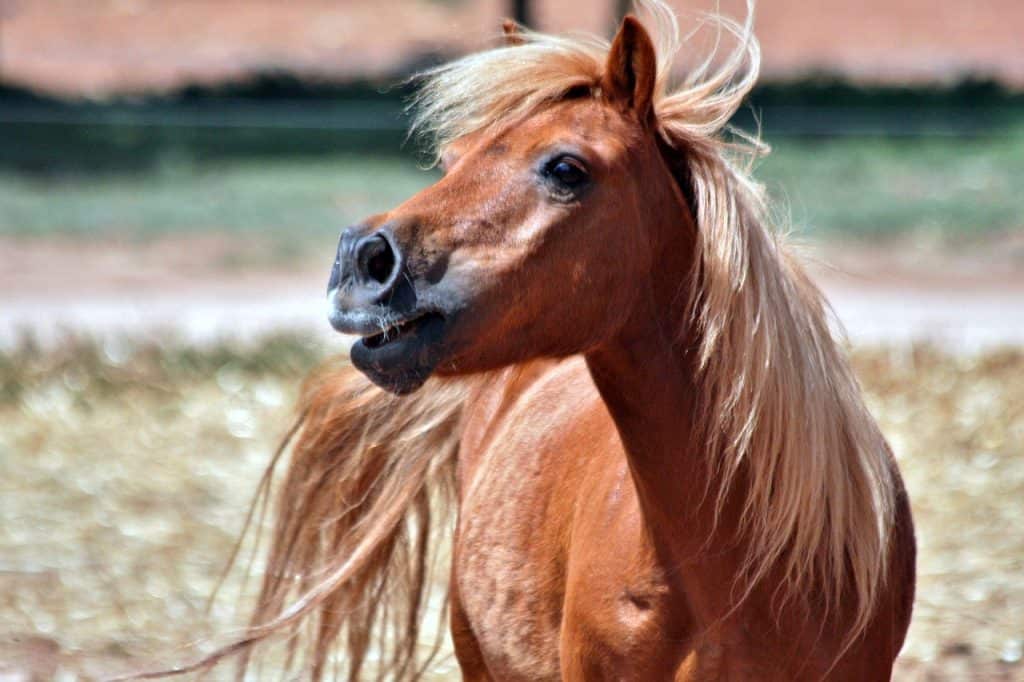
| Species Name: | Equus ferus caballus |
| Family: | Equidae |
| Care Level | It is easy to care for; they are just as easy to handle as other pony breeds. |
| Temperament: | Intelligent; Willing; Courageous |
| Color Form: | All colors, except Appaloosa-like spot. |
| Lifespan: | The average lifespan is between 20-30 years. Some people live to their 40s. Twiglet was 50 years old when he died. |
| Size: | Height: Between 28″ and 42″. Weight: approx. Weight: 300-500 lbs. |
| Diet: | Forage mainly (grass, hay, and sometimes seaweed); water; minerals; grains or supplements only if/when needed |
| The capacity of the enclosure: | Minimum 300ft2 in “dry lots” or 1/2 to 2 acres of pasture (depending on climate/grass type); Maximum – as much space is possible. |
Shetland Pony Overview
Although the origins of the Shetland Pony are not known, there are many theories as to how and where they came from. According to the Shetland Pony Stud-Book Society, the most popular theory is that they evolved from a cross of the now-extinct Tundra Pony type in Northeastern Siberia with the now-extinct Mountain Pony type in Southern Europe. They then crossed through Scandinavia to reach the Shetland Isles region when there were still land bridges.
The introduction of the Celtic Pony to the Isles, which itself is a Mountain-‘Oriental’ cross and possibly of Viking-imported stock, influenced this Tundra-Mountain crossing. No matter how the Shetland’s ancestors arrived on the Shetland Isles in the first place, the only ones that could survive harsh weather and sparse pasturage were able to thrive. This is the breed we know today.
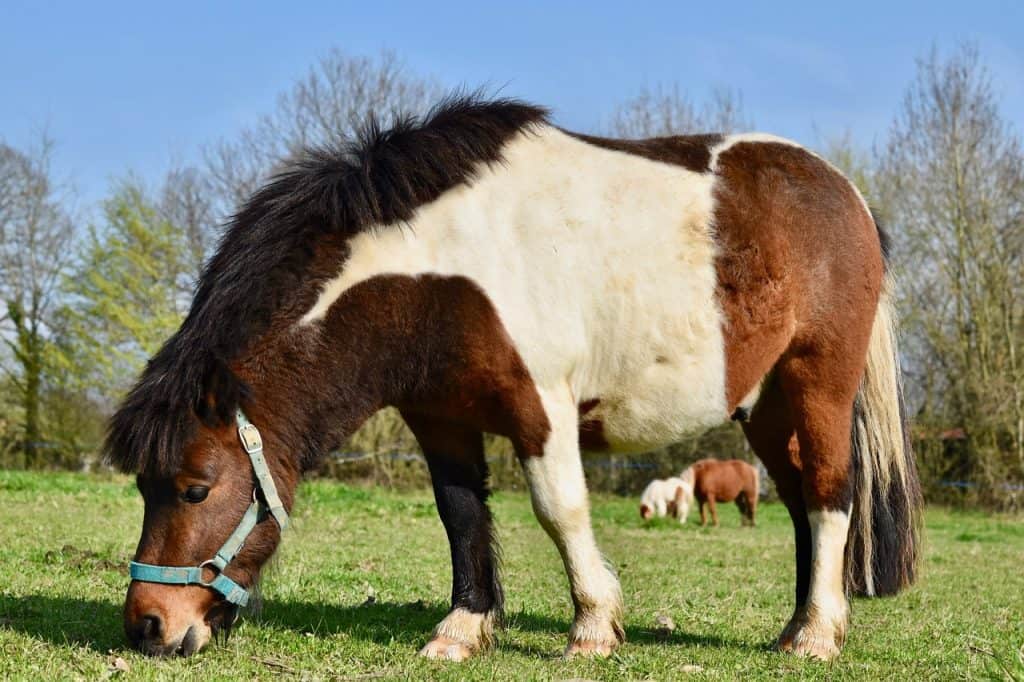
Uses
Local crofters and fishermen have used the ponies for centuries to cultivate the land and transport peat (a fossil-fuel source found only in bogs), coal, and other supplies in wooden bag-bags called “kishies” and turn their tail hair into lines and nets.
Many mine reform bills in the UK were passed in the mid-1800s. This led to an abrupt rise in Shetland Ponies being exported to the Isles to replace children who had to pack coal from the collieries. These Ponies were mostly geldings but also a large number of stallions. The quality of animals produced in the Shetland Islands was negatively affected by this. Multiple breeding farms or studs were created to address the problem. In 1890, the Shetland Pony Stud-Book Society was formed by the owners of these studs.
Although Shetland Ponies are no longer used for light agricultural work and mining, their popularity has not declined like other draft breeds. They are used primarily as children’s mounts or driving ponies.
What Does Shetland Ponies cost?
The purchase price of a Shetland Pony depends on many factors including their age, conformation, and bloodlines as well as their showing records. They will typically sell for between $500 and $3,000. However, stallions and performance horses may be able to fetch more than $5,000.
You should also consider the following costs:
- Veterinary work
- Routine vaccinations, emergency care, or dental care
- Farrier visits every four to eight week
- Daily feed and forage
- If your pony is not kept on your property, there will be boarding fees.
These costs can be difficult to estimate as the cost of pony care varies from one region to another. However, they are generally less than the cost of a full-sized horse.
The Typical Behavior and Temperament
Shetland Ponies can be docile and willing when properly trained. However, their intelligence and general fearlessness may make them more opinionated, stubborn, and impatient. Each pony will be unique. Some horses are better suited for children’s riding, while others can be handled by an adult. They can “hold their own” even among larger ponies.
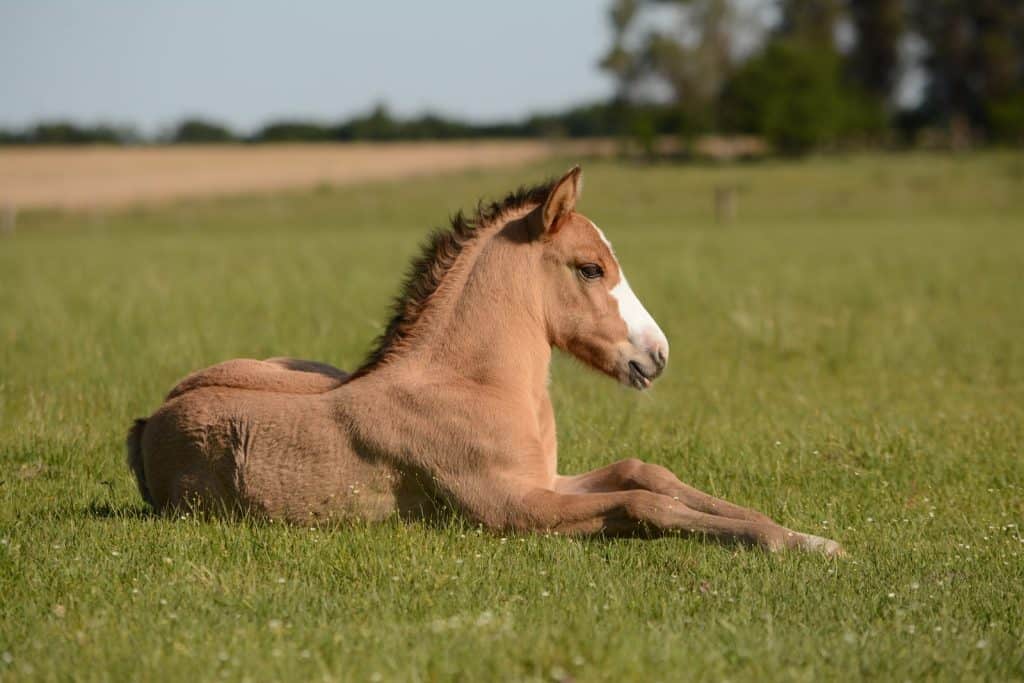
Appearance and Varieties
Miniatures are Shetland Ponies with a height between 28-34″ and 35-42″. Standard-sized Shetland Ponies are those that have a height between 35-42″. They cannot exceed 43 inches in height and must be 28 inches tall. Currently, most show animals are around 32″. Although both lines are Shetland Ponies, they are heavier-boned and more springy than those bred for driving or draft purposes.
No matter if the Shetland Pony is Miniature or Standard size, it must maintain the same general proportions as the Shetland Stud Book’s standards.
- Sturdy is a strong pony with a small to medium-sized head.
- Sloping shoulders
- Deep heart girth and “well-sprung ribs”
- Muscular build
- Strong legs, short.
Its hooves should be strong and well-formed. They were formed from daily walking on the rugged terrain of the Shetland Islands.
They can be any color except that they have Appaloosa-like spot markings. Black, bay, grey, and chestnut are the most popular colors. You can also find palomino and buckskin as well as cremello, cremello, and mushroom. You can also accept pinto-like markings (Piebald if you have black and white) and Skewbald for all other ‘and white’ colors.
How to Care for Shetland Ponies
Attachment
The UK’s Department for Environmental Food and Rural Affairs [DEFRA] states that ponies kept in pasture need 0.2-1.0 hectares (0.5 to 2.5 acres) of grazing per person if no supplementary feed is provided. Smaller areas may be suitable if turnout is the only purpose of the grazing area. You can also temporarily cross-fencing to divide larger fields into smaller sections for rotational or grazing.
Fencing should not exceed 1m [3’3″) high. Shetland Ponies need some shade and windbreak. However, whether this is in the form of trees/hedges or a stable will depend on your management style.
Black Walnut trees are not a good place for horses to be kept. Maple tree poisoning is a problem elsewhere. However, horses are not at risk from the only U.K. native species, A. Campestre, Field Maple.
Shetland Ponies recommend a minimum size stall of 3.05m x 3.05m (or 10’x10′).
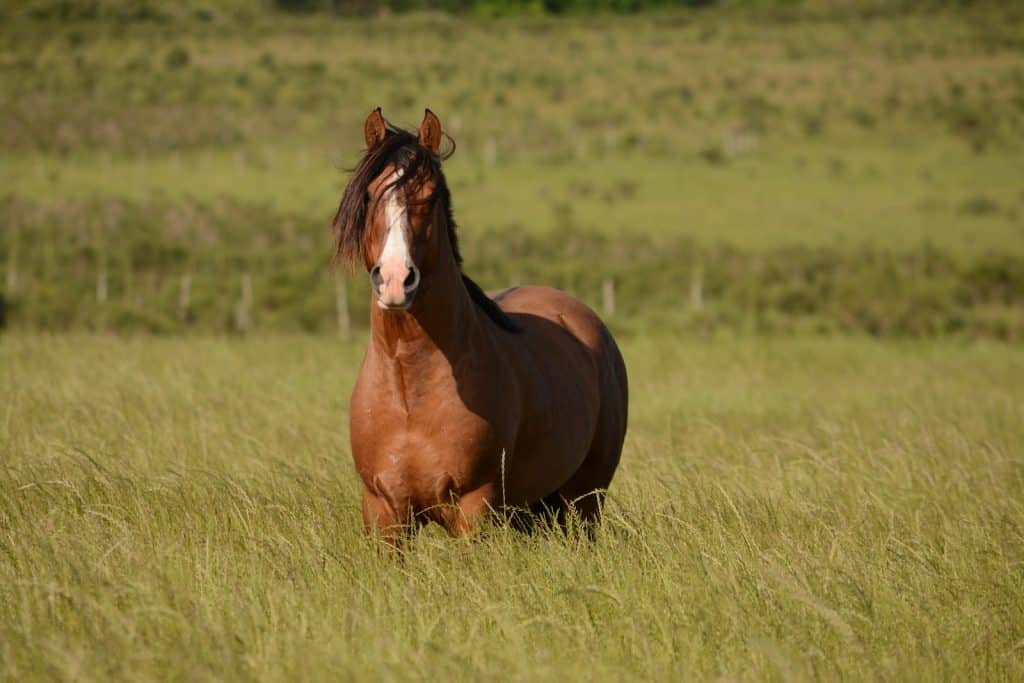
Bedding
Shetland Ponies do not require bedding if they are kept in pastures and well-draining paddocks. Layering straw, hay, or wood shavings on the ground around the problem areas before they become muddy is a good idea if drainage is an issue.
These materials are excellent insulators and absorbent. They allow the ground to thaw in spring and absorb early rainwater, rather than creating standing puddles. If the bedding is placed on top of existing soil, it will not work. The mushy ground will absorb the bedding material and create a dry area.
Beardless straw should be used to make dry patches or bed stalls. Wood shavings should also not contain toxic wood species. Black Walnut wood products should be avoided, as they can cause horse death.
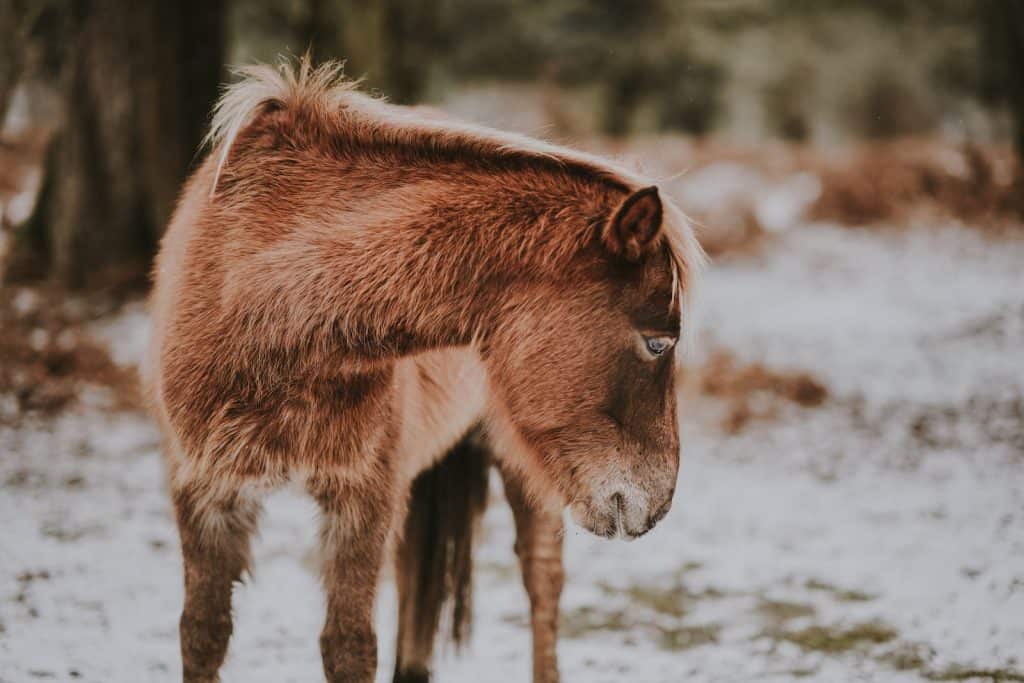
Climate/Environment
The Shetland Islands are extremely windy and harsh, with winter temperatures barely above freezing. However, the ponies’ thick double coats and long manes and tails enable them to thrive. Their outer guard hairs shed rainwater, keeping them dry and warm. They can seek shelter in the rough, hilly, and peat-banked areas of the common grazing area, also known as scattalds.
Are Shetland Ponies compatible with other pets?
Shetland Ponies are best kept with similar-sized horses as they are herd animals. Although they can be kept with larger horses, the difference in size could put them at greater risk.
It may not be possible to keep them together with or near another pony or horse. A different companion animal should also be considered. Alternative species of herd mate options are goats, sheep, and small cattle. Each horse is unique and may not get along well with other species.
Dogs are also an option. However, they must be trained not to chase or nip at ponies. They are also good companions on trail rides.
How to feed your Shetland Pony
Shetland ponies are often considered to be ‘easy-keepers’. This is due to their long history of living off the poor grazing of scattalds (common grazing areas that are predominantly heather-moor), and the seaweed that can be found on beaches. These are natural sources of many minerals that grasses lack.
They need a primarily forage-based diet, which is approximately 1.75 to 1.75 pounds of moderately-quality grass hay per 100-pounds of body weight. Some form of ration-balancing or mineral supplementation may be necessary. Because of the high levels of carbohydrates in concentrates and richer grasses or hay, they can become obese quickly.
Make sure your Shetland pony has access to clean, drinking water.
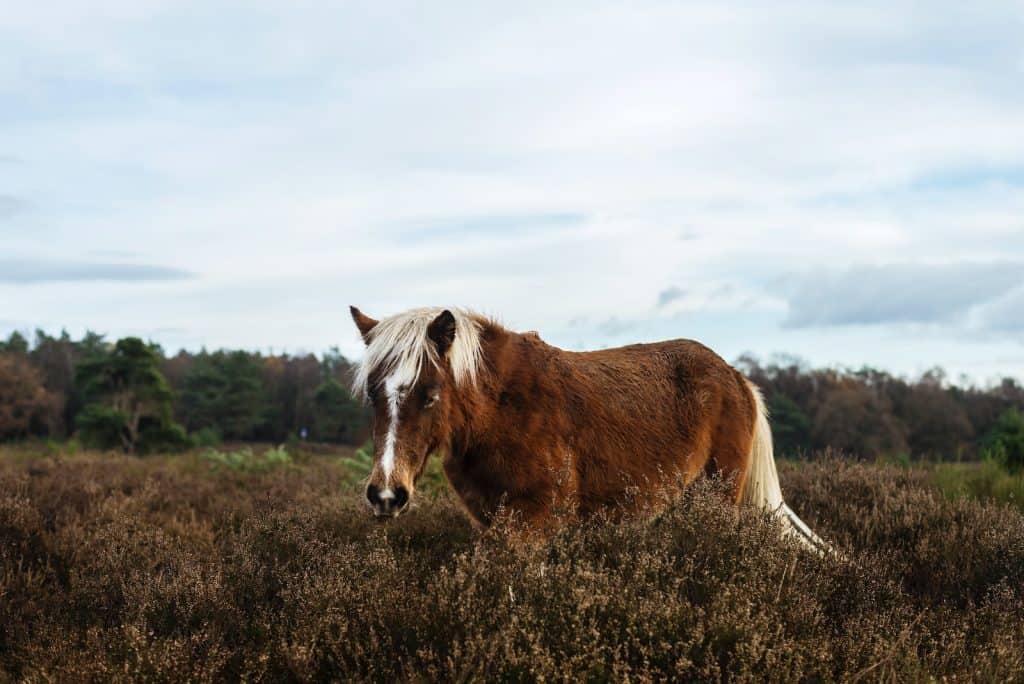
How to Keep Your Shetland Pony Happy
The health problems associated with obesity are a major concern for Shetland ponies. Australian researchers found that Shetlands had the highest obesity prevalence of any pony or horse breed.
Equines that are obese have a higher risk of developing laminitis, equine metabolic syndrome, tendon and joint problems, and heart stress.
Shetland ponies are extremely hardy, and this is not the only thing. To prevent saddle sores, they should be brushed before riding. This is to remove dirt and sweat between the fur and the saddle pad.
It is important to schedule annual or bi-annual vet visits for vaccinations, dental exams (which could or may not lead to their teeth being floated), parasite control in the form of targeted deworming, and fecal egg count.
They should be checked on their hooves regularly and have farrier visits scheduled to keep them trimmed or shoed.
Breeding
1956 saw the creation of the Shetland Islands Premium Stallion Scheme. The Department of Agriculture offers high-quality registered stallions for seven of the common grass scattalds. This allows breeders to identify the sire of their foals.
In 1983, the Premium Filly and Colt Scheme was established to assist breeders in keeping their best foals for future breeding.
The mares are taken from their owners’ arable land to the scattalds in April for foaling. They then run with the registered horse until September. This allows them to be born into a natural herd and allows them to breed in it. The process is free from human interference if any.
Are Shetland Ponies suitable for you?
The Shetland pony is a great choice if you’re looking for a horse, a driver or light draft animal, a companion animal, or a child’s mount. The Shetland pony is a friendly, docile, and willing animal. Its smaller size and general hardiness make it an ideal choice for many people and situations. There are approximately 100,000 Shetland ponies worldwide, so you should be able to find one that suits your needs.
Before you decide on which pony to buy, it is important that you meet with several Shetland ponies breeders before making a purchase. If you have any doubts about purchasing a pony, it is advisable to bring a friend or professional horseman, like your trainer, along.
How much does a Shetland pony cost?
A Shetland pony costs between $500 and $1,500 on average. Breeder ponies often command a higher premium, especially if they can prove their purebred heritage. Many rescue organizations have Shetland ponies for adoption.
What is the average lifetime of a Shetland pony?
Shetland ponies live for an average of 20-25 years.
What do you name a male Shetland pony?
A male horse or pony that is at least four years old but has not been gelded (castrated). Stallions are also known as “Entire.”
What do you feed a Shetland pony?
Every day, horses, miniature horses, and ponies require at least 1-1.5 pounds of hay or pasture (on a dry matter basis) per 100 pounds of body weight. A 300-pound miniature horse, for example, requires at least 3-4.5 pounds of hay per day or 9-13.5 pounds of pasture (fresh grass is significantly higher in water content) every day.
Can Shetland ponies pull carts?
Shetland Pony Despite their diminutive stature, Shetland ponies are quite robust and durable. Throughout the nineteenth century, this breed drew carts and worked in mines. They were also popular as driving horses and child companions. They are normally polite but maybe a little pushy.
Are Shetland ponies suitable for beginners?
Shetlands are easy to care for; they don’t require much food or water, making them ideal for novices who want a tiny horse but aren’t sure if they’ll enjoy caring for one. This is also why many youngsters select shetland ponies as their first horse.
What makes a Shetland pony unique?
They are distinct beasts. They are the tiniest pony breeds in Britain (no taller than 42 inches), yet they are also among the toughest. Shetland Ponies can weather the worst of Shetland’s winter storms and travel quickly to find food and shelter amid swampy heath and rock-strewn hills.
Are Shetland ponies friendly?
Yes, Shetland ponies may be quite sociable and devoted. They are clever and make friends with youngsters and other ponies as long as they are happy and well-treated. Shetland ponies have distinct personalities